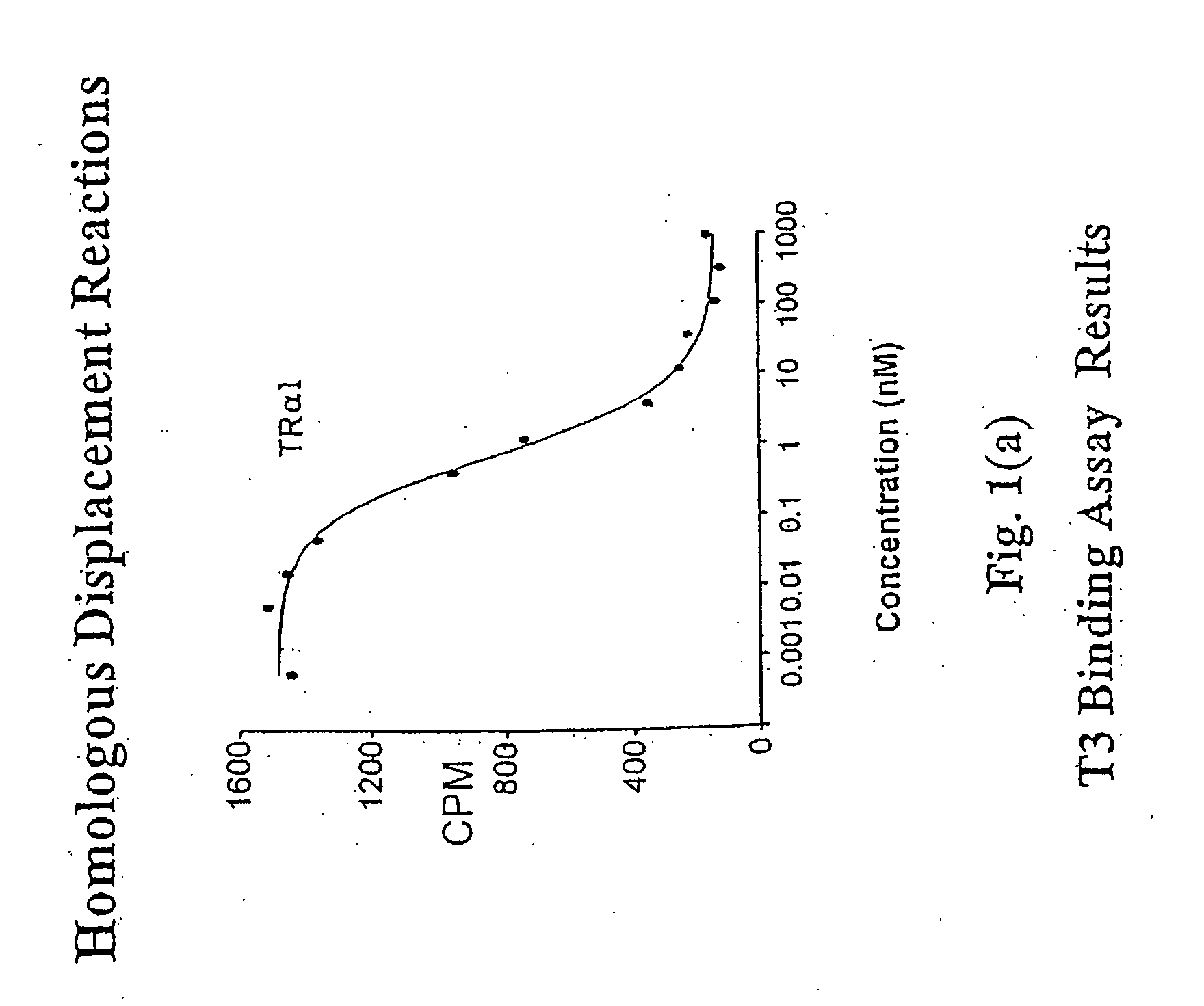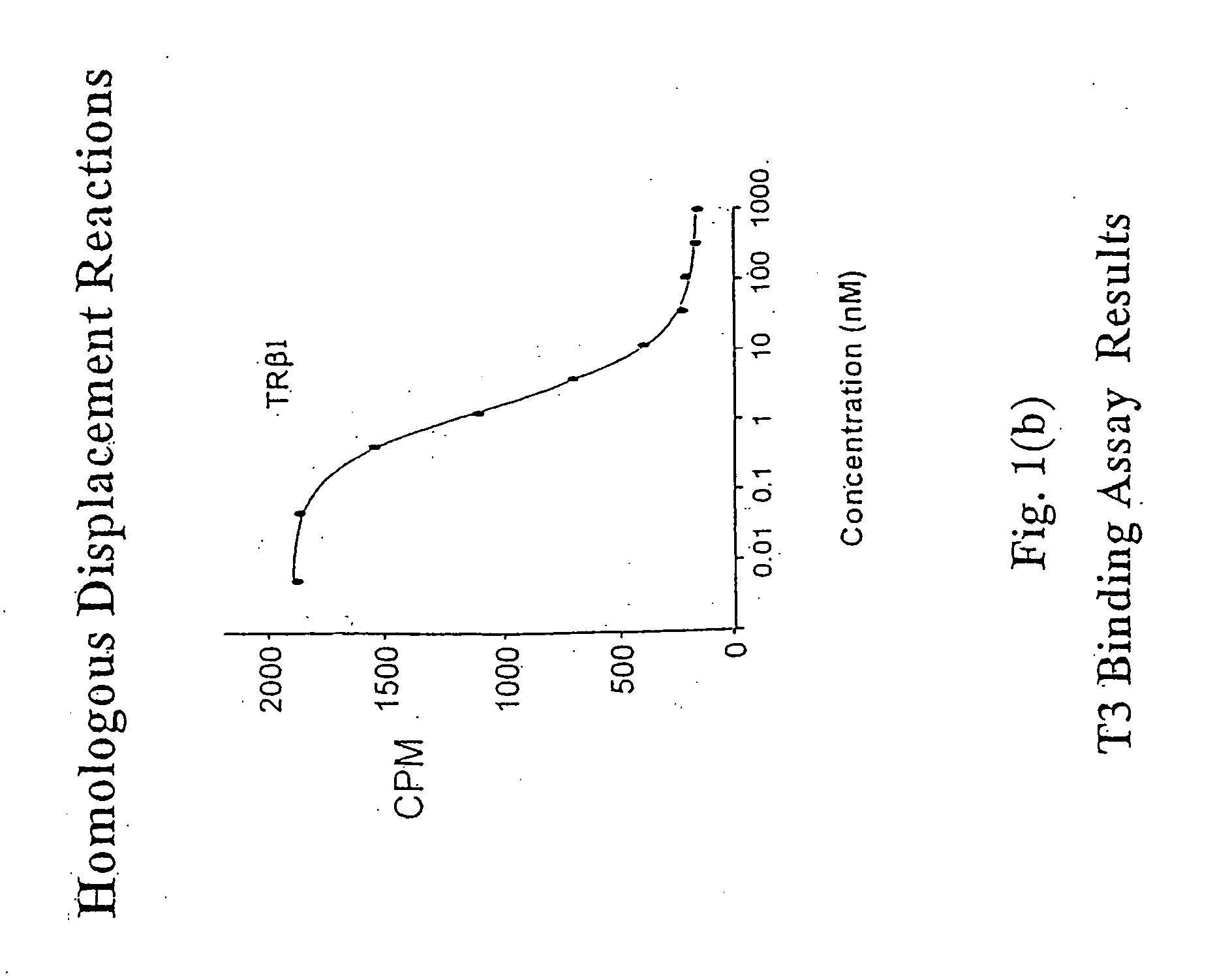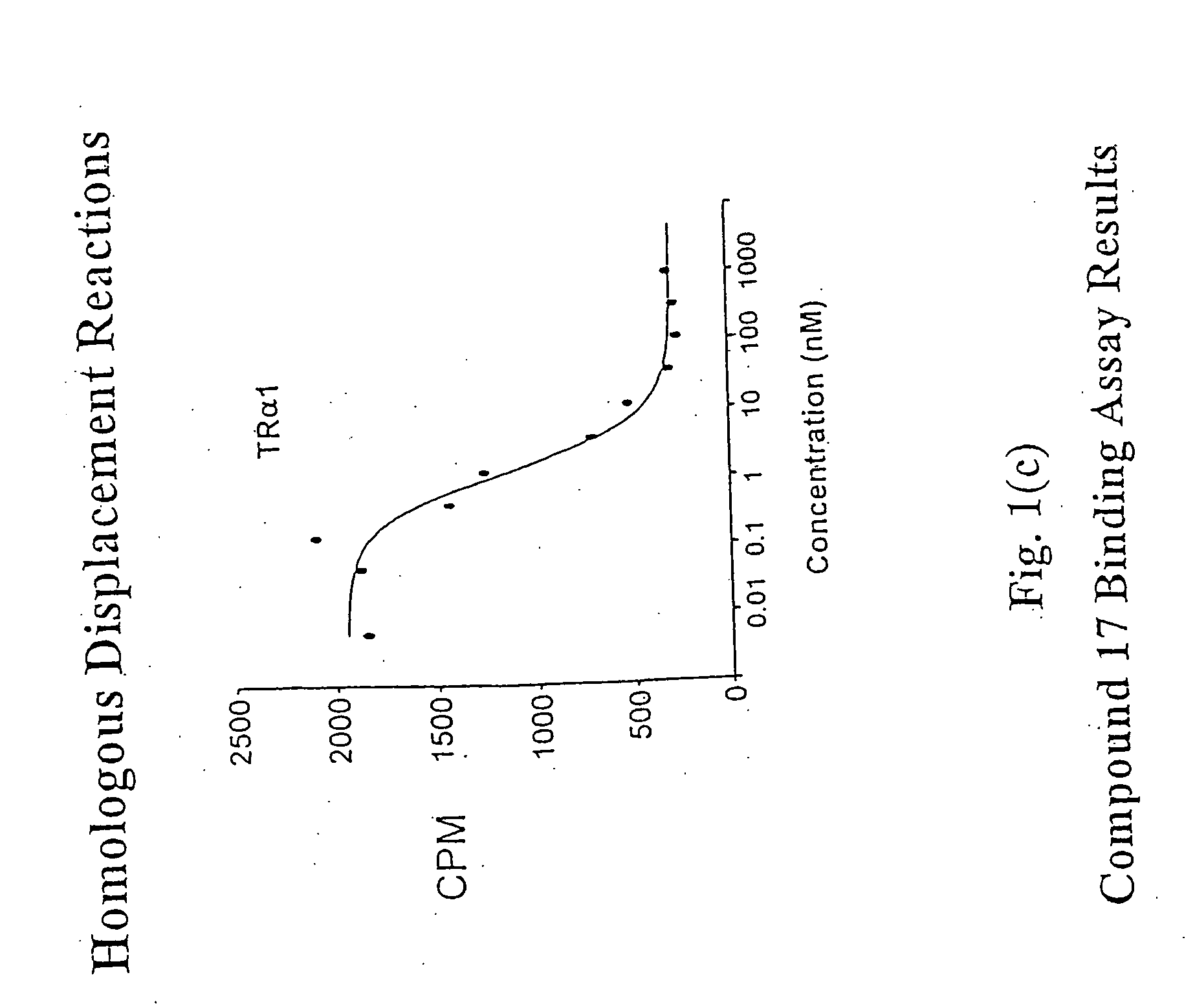Novel phosphorus-containing thyromimetics
a thyromimetic and phosphorus-containing technology, applied in the field of phosphonic acid-containing compounds and monoesters, can solve the problems of complex effectiveness of th treatment, increase in mitochondrial proton leakage, loss of energy, etc., and achieve the effect of improving the therapeutic index, improving efficacy, and modulating gene expression
- Summary
- Abstract
- Description
- Claims
- Application Information
AI Technical Summary
Benefits of technology
Problems solved by technology
Method used
Image
Examples
example 1
Compound 1: N-[3,5-dimethyl-4-(3′-iso-propyl-4′-hydroxyphenoxy)]-carbamoylphosphonic acid
[1445] Step a:
[1446] A mixture of 3,5-dimethyl-4-(3′-iso-propyl-4′-methoxyphenoxy)aniline (J. Med. Chem. 38:695 (1995), 0.1 g, 0.35 mmol) and diphosgene (0.04 g, 0.19 mmol) in dioxane (3.0 mL) was heated at 60° C. for 3 h. The reaction mixture was cooled to room temperature and the solvent was removed under reduced pressure. To the residue was added a solution of diethyl phosphite (0.06 g, 0.42 mmol) in hexanes (1.0 mL with 3 drops of triethylamine) and the reaction mixture was heated under reflux for 3 h. The reaction mixture was cooled to room temperature and the solvent was removed under reduced pressure. The crude product was purified by column chromatography on silica gel, eluting with ethyl acetate-hexanes (1:3) to afford the diethyl phosphonate as an oil (0.1 g, 64%): 1H NMR (300 MHz, CDCl3): δ 8.44 (s, 1H), 7.17 (s, 2H), 6.10-6.60 (m, 3H), 4.10 (m, 4H), 3.58 (s, 3H), 3.07 (m, 1H), 1.92...
example 2
Compound 2: 1-amino-2-[3,5-diiodo-4-(4′-hydroxy-3′-iodophenoxy)-phenyl]ethylphosphonic acid
[1449] Step a:
[1450] To a solution of 4-benzyloxyphenylacetyl chloride (4.0 g, 16.2 mmol) in THF (10.0 mL) at room temperature was slowly added triethyl phosphite (3.33 mL, 19.5 mmol). The reaction mixture was stirred at room temperature for 16 h and the solvent was removed under reduced pressure. The residue was treated with hexanes (20 mL) and the mixture was filtered. White solid was collected and air-dried. The solid was dissolved in pyridine (25.0 mL) and hydroxylamine hydrochloride (1.96 g, 28 mmol) was added. The reaction mixture was stirred at room temperature for 72 h and the solvent was removed under reduced pressure. The crude product was purified by column chromatography on silica gel, eluting with ethyl acetate-hexanes (7:3) to afford diethyl 2-(4-benzyloxyphenyl)-1-(hydroxyimino)ethylphosphonate as a colorless oil (5.2 g, 85%): 1H NMR (300 MHz, CDCl3): δ 7.18-7.38 (m, 7H), 6.80...
example 3
Compound 3: 2-[3,5-diiodo-4-(4′-hydroxy-3′-iodophenoxy)phenyl]ethylphosphonic acid
[1463] Step a:
[1464] To a solution of tetraethyl methylenediphosphonate (1.6 g, 5.6 mmol) in THF (16.0 mL) at 0° C. was slowly added sodium hydride (0.14 g, 5.6 mmol). The reaction mixture was stirred at 0° C. for 30 min and a solution of 4-benzyloxybenzaldehyde (1.0 g, 4.7 mmol) in THF (4.0 mL) was added. The reaction mixture was stirred at 0° C. for 30 min, quenched with H2O (30 mL) and extracted with ethyl acetate (30 mL). The organic layer was dried over MgSO4, filtered and concentrated under reduced pressure. The crude product was purified by column chromatography on silica gel, eluting with ethyl acetate-hexanes (1:1) to afford the phosphonate as white solid (1.5 g). The solid was dissolved in CH3OH (15.0 mL) and Pd—C (0.40 g) was added. The reaction mixture was stirred under a H2 atmosphere for 16 h, filtered through a Celite plug and concentrated under reduced pressure to afford diethyl 2-(4-...
PUM
| Property | Measurement | Unit |
|---|---|---|
| Fraction | aaaaa | aaaaa |
| Molar density | aaaaa | aaaaa |
| Mass | aaaaa | aaaaa |
Abstract
Description
Claims
Application Information
 Login to View More
Login to View More - R&D
- Intellectual Property
- Life Sciences
- Materials
- Tech Scout
- Unparalleled Data Quality
- Higher Quality Content
- 60% Fewer Hallucinations
Browse by: Latest US Patents, China's latest patents, Technical Efficacy Thesaurus, Application Domain, Technology Topic, Popular Technical Reports.
© 2025 PatSnap. All rights reserved.Legal|Privacy policy|Modern Slavery Act Transparency Statement|Sitemap|About US| Contact US: help@patsnap.com



